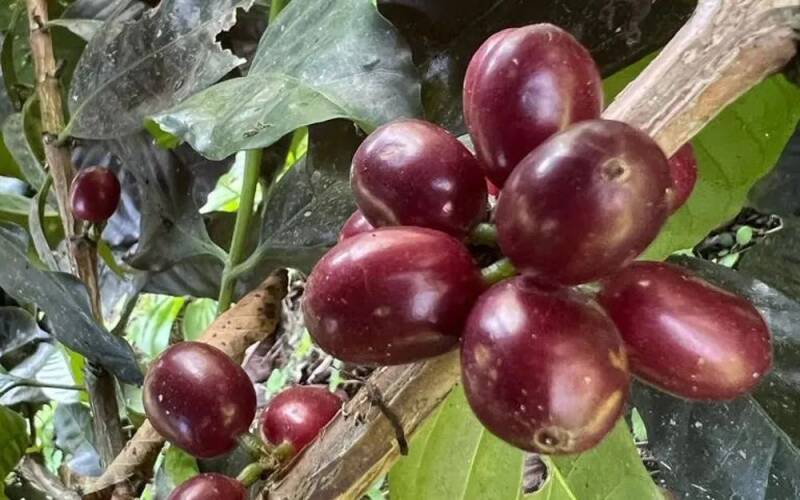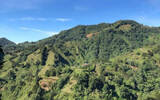Introduction of Colombian Coffee Bean and Honduran Coffee Bean Pacas
Now, with the development of the coffee industry, coffee varieties have been bred through continuous transplantation, mutation and mating. In addition to some common varieties, Bourbon, Typica, Kaddura, Catimor and so on. But now coffee research institutes in many countries and large companies will develop some rare varieties.
When it comes to some popular varieties, in addition to Rosa, there is also a popular sidra in recent years. Hizao, like the improved Typica Mejorado, originally came from the Ecuadorian province of Pichincha, where there was once a breeding center for Nestle coffee, which was pending the development of breeding hybrids between Ethiopian native species and other varieties such as bourbon. But the center has been closed, but Hope claw should be one of Nestl é's "unreleased" varieties. According to some reports, Hijaw said it was born through a cross between iron pickup and bourbon, but later carried out genetic tests through research institutions and found that the variety was genetically similar to the Ethiopian native species.
Although it is genetically related to Ethiopian native species, Hijaw is more suitable for cultivation in South America, mainly in Ecuador and Colombia, between 1650 and 1800 meters above sea level. The claw has a high yield and is resistant to pests and leaf rust, but it is extremely susceptible to coffee berry disease. The hope claw variety will become popular at the World Coffee Competition (WBC), where both players used coffee beans in 2019 and 2022 and won the championship that year, making it famous. At present, Qianjie has coffee beans from Finca El Diviso, a famous Colombian producing area, Huilan. This claw is treated with double anaerobic solarization. After cooking with the ratio of gouache powder in V60, passion fruit, citrus and other flavors, it is slightly fermented and round.

There are also Pacas beans, Pacas like Kaddura in Brazil or Villa Sarchi in Costa Rica, which are natural mutants of bourbon. The plant becomes smaller because of a single gene mutation, but this has also become an advantage of this variety. Because of its small size, it can be planted closely with other plants. The Pacas variety was first discovered in 1949 on a farm owned by the Pacas family in the Santa Ana region of El Salvador (hence the name Pacas). In 1960, the Salvadoran Coffee Institute (ISIC) began a pedigree selection program for Pacas (selecting a single plant through several generations). At present, the variety is still widely cultivated in El Salvador, accounting for 25% of the country's coffee production. Later, it was introduced to Honduras by the Honduran Coffee Institute (IHCAFE) in 1974, mainly in the Montesirius (Montecillos) region of Honduras.
Important Notice :
前街咖啡 FrontStreet Coffee has moved to new addredd:
FrontStreet Coffee Address: 315,Donghua East Road,GuangZhou
Tel:020 38364473
- Prev

"eat cinder", Tims fresh coffee is accused of having too many particles!
▲ click to follow | Daily boutique coffee culture magazine coffee workshop each chain coffee brand has its own memory points, such as Lucky's 9.9 Coffee, manner's "every request" pull flowers, etc., while the Canadian chain Tims Tianhao Coffee makes consumers remember their bagels and freshness.
- Next

Brazil IAC's research on the cultivation of "natural decaffeinated" coffee has entered a deterministic stage.
Recently, Brazilian researchers said in a decades-long study that the study is entering a decisive stage, which focuses on growing coffee plants with little or no caffeine. A statement from the government of the state of Sao Paulo said the findings may change the consumption of coffee-free beans in the United States
Related
- Can artificial hand brewing replace the barista's real hand brewing coffee? What is the difference between making coffee with fake hands and making coffee with real hands?
- Can't sell it?! Coca-Cola gives up selling Costa!
- The brewing parameters of the world's top rose summer coffee, ratio, water temperature, grinding and sharing! Graphic teaching on Emerald Manor Rose Summer Brewing Method!
- Jasmine milk tea, a new cup of ice?! Netizen: Why don't you just sell ice cubes
- Is it necessary to buy a cloth powder for an espresso machine? Why should we evenly distribute the powder when extracting espresso?
- What is the grinding ratio, water temperature and powder amount needed to make Combo in Mocha pot coffee? Mocha pot is suitable for making coffee deep and light baked beans??
- Caught off guard! Starbucks '15-year-old store quietly closes!
- Naixue Drink drank a stone and claimed a claim was retaliated by the merchant?!
- What is the difference between a cake filter cup and a V60 conical filter cup? What are the advantages and disadvantages of the flat-bottomed filter cup brewing solution?
- What is the difference between fine coffee powder and medium coarse coffee powder? Do I need to sift out the fine coffee powder for making coffee by hand?

